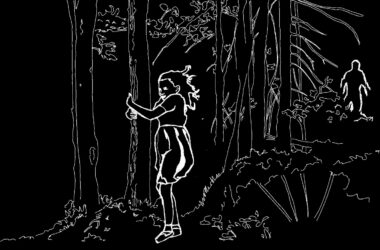The 2025 MTV Video Music Awards (VMAs) aired on Sept. 7, featuring stunning looks, heartfelt speeches, and star-studded performances. Out of 13 impressive numbers, one stood out from the rest: Tate McRae’s. Her showstopping performance solidified her status as the best dancer in the music industry.
Accompanied by a group of dancers, Tate McRae performed a mashup of “Revolving Door” and “Sports Car,” two songs off her latest album, So Close to What, with choreography by Robbie Blue. The number begins with more conceptual choreography as McRae and her dancers demonstrate their flexibility, contorting themselves into seemingly impossible shapes. It then concludes with a complex dance sequence: McRae steps onto a sand-covered stage, where every movement sends dust scattering artfully around her and her dancers. The VMAs’ performance-heavy format can become tiring to watch, but McRae’s act broke the evening’s monotony, captivating the attention of at-home viewers and celebrities alike. From lifts and splits and fire to sand, she left viewers in awe.
For those familiar with her background, McRae’s level of excellence was not a surprise: Tate McRae was a household name in the dance world before she became one of today’s rising popstars. As a child, she trained at the Professional Division of the School of Alberta Ballet, one of Canada’s top ballet schools. She holds some of the most coveted titles in the dance world, winning silver at the Youth American Grand Prix in 2015—the largest ballet competition and scholarship audition in the world. The star also won the American National title of Best Dancer at The Dance Awards three times: As a mini (2013), a junior (2015), and a teen (2018). She even participated in So You Think You Can Dance: The Next Generation at age 12, placing third against the best of the best child dancers in the United States. As one of the most decorated child dancers in the industry, many view Tate McRae as a dance prodigy.
This professional training was on full display in her VMAs performance last week. While other performances included dances as part of their musical acts, no choreography came close to matching the difficulty and precision demonstrated by McRae and her dancers. Both Sabrina Carpenter and Lady Gaga, for example, performed the viral choreography from their respective music videos. Carpenter recreated the “dance break” in the music video for her song “Tears,” completing a series of jazz-like steps. Similarly, Lady Gaga’s performance incorporated the iconic moves from her music video for “Abracadabra,” which consists largely of upper-body movements to imitate a monster-like figure. When viewing these performances alongside McRae’s, it becomes apparent that Carpenter’s and Gaga’s dances are far more rudimentary. This is not to say that simplicity is bad. In fact, it’s their dances’ simplicity that allows them to become viral trends, as fans can easily replicate the routines. TikTok users, for instance, frequently recreate the dances from both “Tears” and “Abracadabra,” thereby circulating the songs and increasing their popularity.
While virality is certainly appealing to most artists as it expands their outreach, what makes Tate McRae’s performance stand out is its unachievable nature. McRae’s routine is not something the average person can recreate in their living room without breaking their backs (and probably taking some furniture out with them too). The mastery required for McRae’s performance creates a satisfying contrast to the night’s more basic performances, making her the obvious standout.
Ultimately, 2025 VMA performers like Sabrina Carpenter and Lady Gaga are singers who can also dance. Tate McRae, conversely, is a dancer who also sings. Tate McRae’s performance last week was career-defining as it separated her from other popstars, proving that she is in a league of her own.









